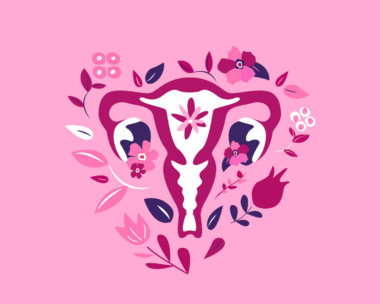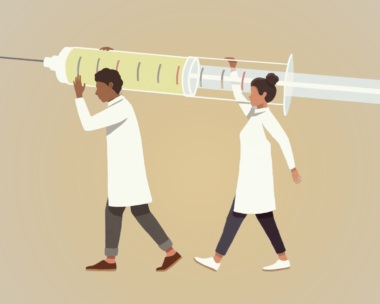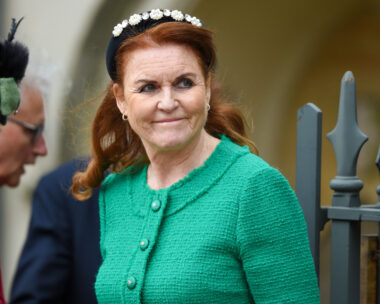Her first nickname was Topsy because she had quite a full head of hair when she was born, Julie Forster says of her younger sister, Elizabeth.
She remembers standing on her tippy toes, aged six, and peering into the maternity hospital viewing room to see Lizzie’s small pink head poking out of the swaddled bundle. Elizabeth was the baby of the family and for as long as Julie can remember, she and her sister were close.
“No day or year or month was boring with Elizabeth. She was full of adventure. She gets that from Mum,” Julie says.
As they grew, the sisters’ intrepid mother would gamely lead them on mystery bus rides and insect observation walks. When it rained, she’d help them fold paper boats to send down the rapids that formed in the gutter of the suburban Sydney street where they lived. Holidays were spent at their grandmother’s house where the family would go canoeing on Lake Macquarie. These pioneering rambles meant mud and mess, and the end of the day was marked with a warm bath and a sprinkling of talcum powder.
“It would go under the arms and on your genitals. That continued even when we were on holidays because our grandmother used to do it as well. It travelled with us. Wherever we were it was always in the bathroom,” Julie says.
“That’s a very integral part of our childhood because you’re getting filthy, you’re running around. So the routine was you come back and have a bath and hopefully go to bed smelling sweetly, and that’s where the talcum powder came into it.”
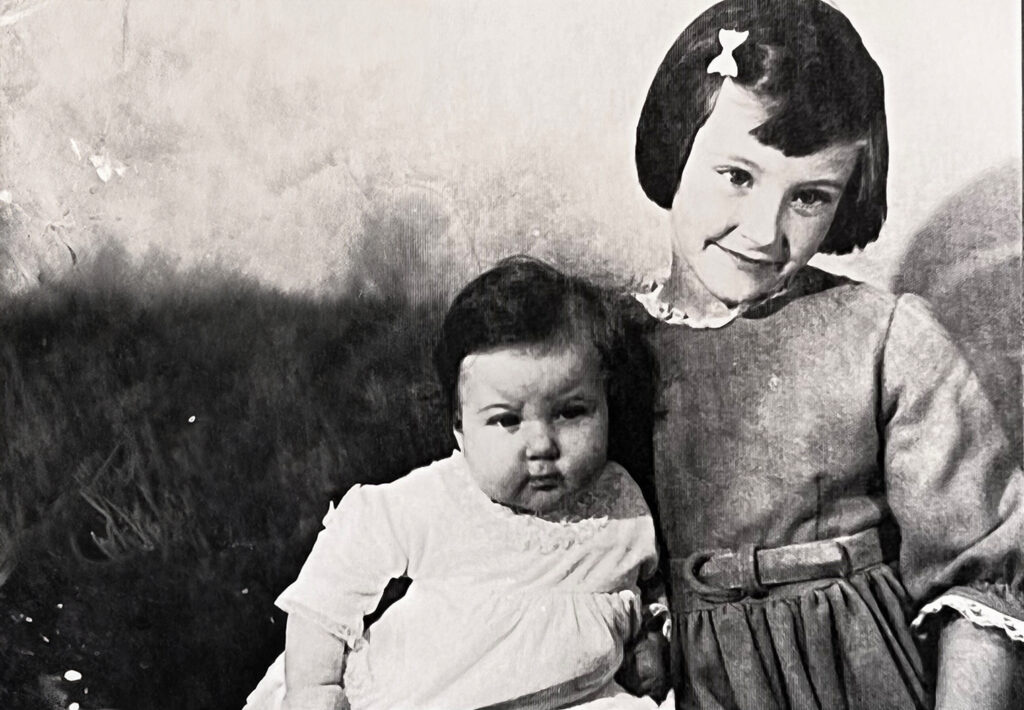
As they grew up, Julie and Elizabeth continued using talcum powder on themselves and their own children.
The sisters remained close, and when Elizabeth was diagnosed with ovarian cancer in 2013, they pulled together. After Elizabeth’s death in 2018, Julie became aware of several lawsuits in the US alleging a link between Johnson & Johnson baby powder and women’s reproductive cancers, and she began asking questions.
“Elizabeth was tested for the BRCA gene but didn’t have it,” Julie says. A mutation in the BRCA1 or BRCA2 gene puts women at a higher risk of developing breast or ovarian cancer. “Then the research about Johnson & Johnson talc and ovarian cancer started to surface. It was the only explanation we could find.”
For more than a century, Johnson & Johnson formulated its baby powder using crushed talc, which is a mineral that often forms naturally alongside the crystalline mineral tremolite. Tremolite is a type of asbestos, a known carcinogen that increases the risk of developing lung, larynx and ovarian cancer in people who are exposed to it. An estimated 4000 Australians die from asbestos-related diseases each year. The material has been banned in Australia since 2003.
Since 1999, when Texan woman Darlene Coker alleged baby powder had given her mesothelioma, Johnson & Johnson has maintained that its product is safe. However, subsequent lawsuits have turned up documents that indicate testing has found asbestos in Johnson & Johnson baby powder. In 2018, a Missouri jury awarded 22 women US$4.69 billion after it found Johnson & Johnson baby powder caused their ovarian cancer. The company said the verdict was the result of a “fundamentally unfair process”.
In 2019, the US Food and Drug Administration (FDA) identified a batch of Johnson & Johnson baby powder that was contaminated with the carcinogen. It prompted more lawsuits.
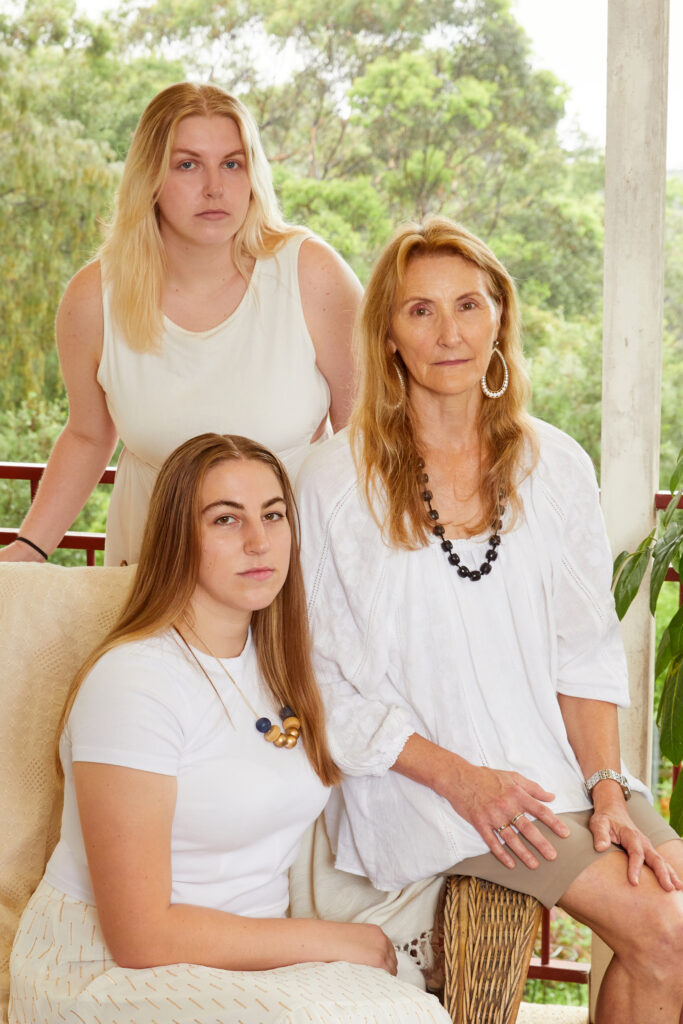
Johnson & Johnson launched its own investigation, which it said disproved these findings. “Decades of scientific studies by medical experts around the world support the safety of our product,” the company insisted in May 2020. Nevertheless, Johnson & Johnson stopped selling its talc-based baby powder in the US in 2020 and in Australia in 2023, replacing it with a cornstarch alternative. In a statement, Johnson & Johnson said this was a commercial decision, caused in part by a decline in sales “fuelled by misinformation around the safety” of baby powder.
The World Health Organisation says there is no safe level of asbestos exposure and, along with the Cancer Council Australia, agrees that exposure to asbestos increases the risk of ovarian cancer.
Hundreds of Australian women and their families who used talcum powder believe the company may have a case to answer. And now the legal battle will move to Australia.
Last December, Shine Lawyers announced they were investigating a potential class action that would seek compensation for Australian women who developed cancer – including ovarian, fallopian tube, endometrial and cervical cancer – after years of prolonged talcum powder use.
Julie supports the action. “It’s hugely important to investigate why something in our environment had such a devastating effect,” she says, adding that, “getting justice for Elizabeth is important.”
Kate’s story
Adelaide woman Kate Hannan had some spotting and was feeling “a little off” in the early days of her third pregnancy, but neither of these things caused alarm until her 13th week.
“I noticed there was quite a bit more bleeding and I thought, ‘it’s time to see about going to the hospital’,” she says. Then she stood up and “everything just erupted”. There was blood everywhere. Filling with dread, Kate and her husband raced to the emergency room, certain that she was having a miscarriage. But an ultrasound revealed that her baby’s heartbeat was “nice and strong” and Kate’s obstetrician identified a blood clot as the cause of the bleeding, which resolved itself at around the 20-week mark.
Kate’s first two pregnancies had been stressful and she’d been hoping for a smoother ride this time. Two weeks later, however, the bleeding returned. Again, she went to hospital, again the baby was fine. But her obstetrician found an irregularity and ordered a biopsy. Kate was diagnosed with a rare form of cancer mostly seen in women over 60 and smokers.
“There was no joyful, stress-free pregnancy. It was filled with drama after drama,” Kate says.
Fortunately, she was told, the cancer was stage one. It would require chemotherapy and radiation, but the outlook was good. Kate needed a caesarean as soon as possible so she could start her cancer treatment, but the timing had to be balanced against the risk of her son being born too early. Her medical team settled on bringing him out at 34 weeks, and Henry arrived in the world on November 7, 2022.
Henry developed respiratory distress syndrome, which was stressful for mother and son, but he recovered. Then, four weeks after the birth, Kate had some tests. The results changed everything.
“It was stage four,” she says. “That was the biggest shock. Stage four is never good, right?”
Thankfully, with the type of cancer Kate had, stage four was not a death sentence. “But it’s still a traumatic experience hearing that after you’ve just had a baby as well, wondering where your life is going to be in a year’s time. Three? Four? Five?”
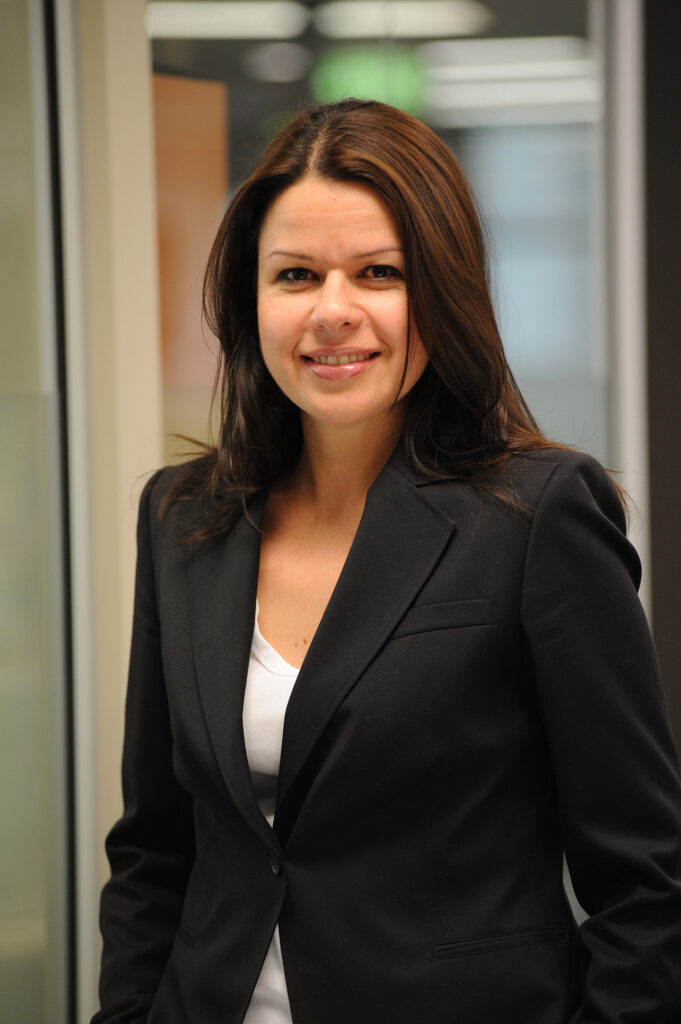
After her treatment started, she developed sepsis. Despite this, Kate responded well and by January 2023 her tumour had shrunk considerably. By July, she was given the all-clear. “We got through it. I don’t know how but we did,” she says.
It was on a cancer support Facebook group that she first heard of the possible link between talcum powder and gynecological cancers.
“I thought, that’s interesting. It was something I used almost every day … It was a religious thing after a shower: You put talcum powder on. My mum did it to me growing up, so it was just learned behaviour. I wonder how many other people were in the same position?
“I had used it heavily on my daughter and my second son. I think that’s what stuck with me the most. I’ve been using a product, not so much for myself, but on my kids, thinking it was safe when it potentially wasn’t.”
She’s conscious, though, that she can’t definitively link her disease to the product. “I can’t say what gave me cancer,” Kate says. She’s read the evidence for both sides and feels it is impossible for a layperson to judge. But she wants to be part of the investigation that uncovers the truth.
“I’ve developed one of the rarest gynecological cancers you can get,” Kate says. “If something that somebody has produced is causing [it], or is a known carcinogen and they know it is, and they haven’t done the proper due diligence and they haven’t informed people, then they absolutely have to be held accountable.”
Barbara’s story
“We always had in the back of our mind, when Mum was diagnosed, an awareness of what had happened in America with talcum powder,” Niomie says. Her mother, Barbara, was diagnosed with ovarian cancer in 2015. “When she passed away and we had her blood tested and she didn’t have the BRCA gene, it kind of cemented it in my head that it was potentially that.”
She says Barbara would “shower herself” in talcum powder. Sisters Niomie and Rachael are now burdened with the fear that their mother’s cancer may have been caused by a product she liberally used on herself and them. “She just wanted to do the best for us kids,” Niomie says.
Barbara was the quintessential model of a devoted wife and mother. She was at home full-time until her children graduated from high school. Then she started working for her local council, where she remained for 30 years. “She baked. She sewed our clothes. She had craft. She had arts. She did everything possible to make sure that we were well cared for and she was there for us when we needed her,” Rachael says.
Barbara was on long service leave, travelling with her husband through Germany, when she began experiencing significant pain. An ultrasound at a German hospital revealed she had ovarian cancer.
Barbara was beside herself. She felt isolated and was distressed at being so far away from her daughters when she received the news. During an MRI, she suffered a stroke. She was medevacked back to Australia where her family was told there was no hope. However, Barbara began chemotherapy and when the tumour shrank, doctors decided to operate.
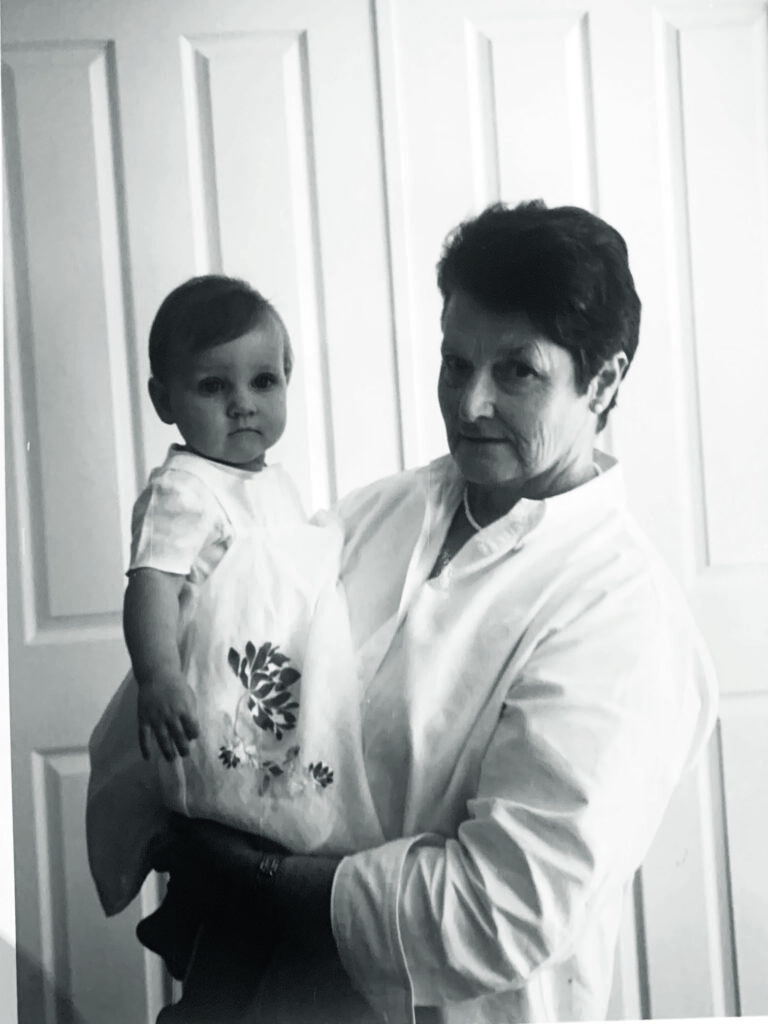
“After Mum’s operation, there was that glimmer of hope,” Niomie says. Sadly, that glimmer faded, and Niomie and Rachael had to say goodbye to their mother.
The alleged link between Johnson & Johnson baby powder and women’s cancers now hangs over their heads. “I feel like we’re walking around with a ticking time bomb ourselves, potentially,” Rachael says.
They decided to share their story because they want other women and families to be alerted to the potential link, and – if the link between baby powder and women’s cancers is established – they want the company that sold and marketed the product to be answerable for their negligence.
“If it’s found that this is the cause, they need to be held accountable,” says Rachael, who is considering preventative surgery because she doesn’t want to suffer as her mother did.
“I don’t want my loved ones to watch me die like we watched Mum die,” she says. “It was horrendous. That image of her last hours doesn’t go away. It wasn’t a peaceful death and it’s haunting.”
The fight for justice
If Shine’s investigation proceeds to a class action, Australian lawyers will be entitled to access Johnson & Johnson documents from the US proceedings. This could include internal reports, memos and company documents uncovered by a Reuters investigation into the allegations of “poisonous talc” that date back to the 1950s.
The Reuters report states that scientists at Johnson & Johnson, their suppliers and independent labs all detected asbestos contamination in talc from the ’50s up until the early 2000s. Reuters also reviewed many internal Johnson & Johnson tests that indicated no asbestos was found, but only a fraction of the company’s talc is tested.
Three tests by three different labs from 1972 to 1975 found asbestos in Johnson & Johnson talc including “rather high” levels in one instance, yet the company reported to the FDA in 1976 that testing from 1972 to 1973 had detected no asbestos in any sample.
In response, Johnson & Johnson has produced a cache of information and data to defend the safety of its talcum powder products. The company says the Reuters article cherry-picked data. Johnson & Johnson has published test results from independent labs including The Geological Society of the US, Harvard School of Public Health, the FDA and others, and says it works with the FDA in the US to ensure consumer safety.
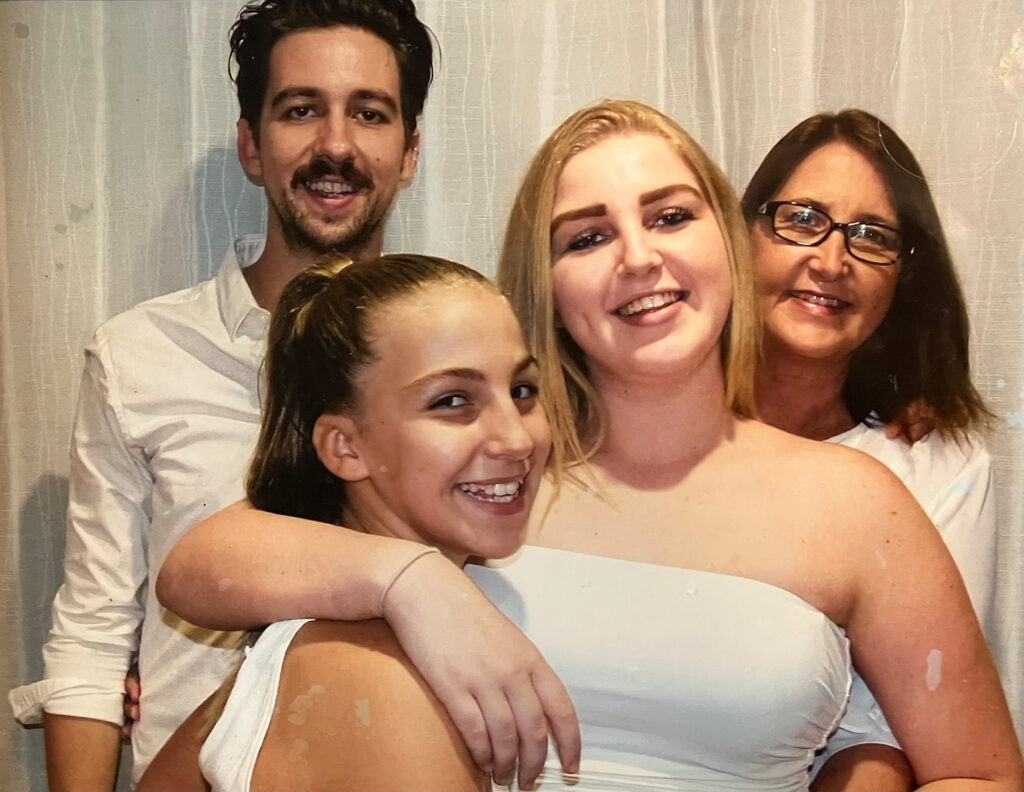
“The stories of anyone suffering from any form of cancer are tragic,” Johnson & Johnson says in a statement. “We sympathise deeply with these patients and their families, and we appreciate that they seek answers. The science and the facts, however, show that their illnesses were not caused by their use of our talc-based products.”
Shine’s joint head of class actions, Vicky Antzoulatos, doesn’t buy it.
“A company like Johnson & Johnson would always deny and vigorously defend any claim brought against them in relation to their products,” she says. “They did that in the vaginal mesh litigation, and we would expect that they would do it again in relation to talcum powder which has been sold to generations in Australia.”
As reported by The Weekly in 2021, Shine Lawyers brought a class action on behalf of thousands of Australian women who suffered chronic injuries from surgical mesh marketed by Johnson & Johnson. The company settled the case for $300 million in 2022. It was the largest settlement in a product liability class action in Australian history.
“The basis of this claim,” Vicky says, “would be that the talc is a defective product. So the claim will probably be brought under the Australian Consumer Law and there would likely be a breach of duty of care claim.”
For Julie, speaking out is a matter of seeking justice for her beloved sister. She recounts when Elizabeth announced she was pregnant with her first child. “We all gathered at the family home in Strathfield. I bought her a pink balloon and a blue balloon. And I wasn’t feeling very well. I was feeling a bit queasy. Later, of course, I put two and two together and I was pregnant as well.
“I went into labour earlier than she did. She visited me in hospital and apparently that put her off,” she laughs. But once her son, Josh, was born, Elizabeth threw herself into motherhood.
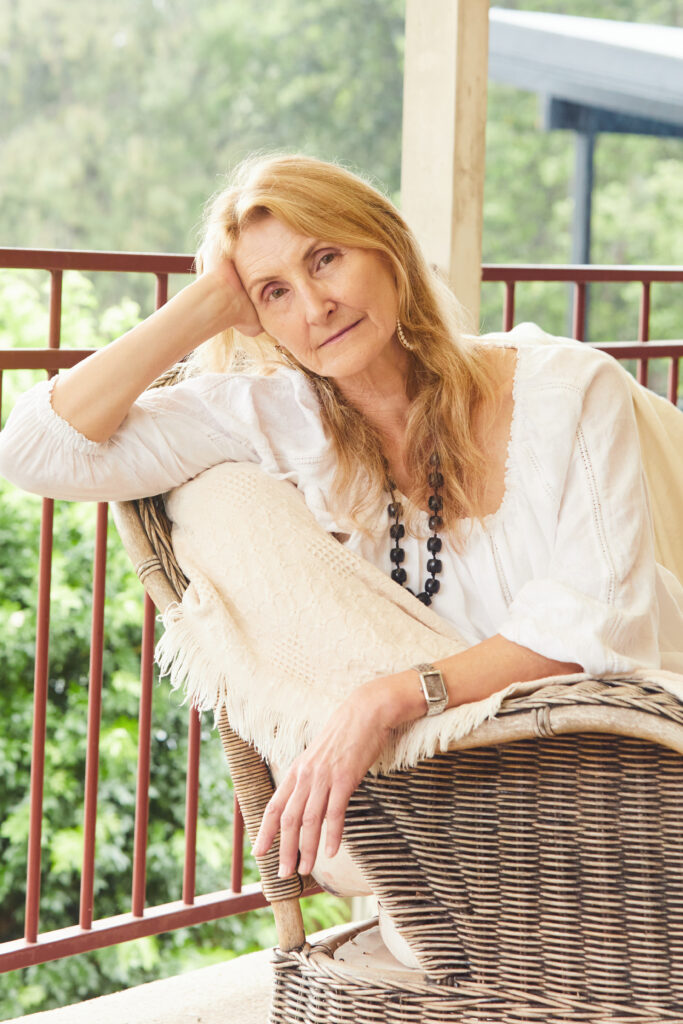
Elizabeth had two more children, daughters Laura and Ellie. As the baby of the family, Ellie was doted on. She was only eight when Elizabeth was diagnosed with ovarian cancer.
The five-year survival rate for ovarian cancer is 49 per cent but Elizabeth confronted it with willful determination.
“I’ve heard cancer sufferers say, ‘I wish everybody would stop telling me you’re a good fighter and you can beat this, because you don’t know’. But Elizabeth more or less believed that she could,” says Julie.
She recalls a particularly dark day towards the end, when Elizabeth was told she was not eligible for a drug trial. “She just let out this wail: ‘Ellie!’ God, it was completely terrible. To have your mother taken way from you at the age of 13 is just terrible,” Julie says through tears.
She is still shocked that an ingredient that was marketed as “hygienic” and “nice for children” has been linked with such devastating consequences overseas.
“We need to urge corporations to take greater care,” Julie says. “If there’s an ingredient you’re unsure about, put people first.”

